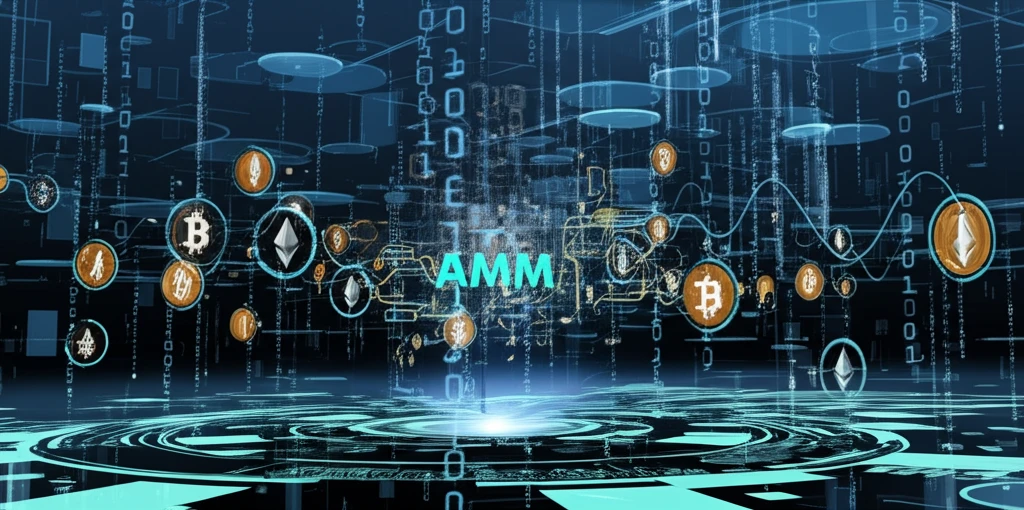
Decoding DeFi: How Automated Market Makers (AMMs) Are Shaping the Future of Finance
"Explore the inner workings of AMMs, how they dynamically set fees, and what it means for the everyday investor."
Decentralized Finance (DeFi) is transforming the financial landscape, offering a broad spectrum of services without traditional intermediaries. At the heart of this revolution are Automated Market Makers (AMMs), which provide a decentralized marketplace for trading digital assets.
AMMs play a vital role in facilitating trades, but they also face challenges such as losses from 'informed order flow,' where arbitrageurs exploit price discrepancies. This article delves into the mechanics of arbitrage within AMMs, examining how dynamic fee choices can optimize revenue and minimize losses.
Inspired by a theoretical framework for dynamic fee choice in AMMs, we will explore how these systems work, how arbitrage impacts their performance, and what strategies can be used to enhance their efficiency. Whether you're a seasoned DeFi enthusiast or new to the world of cryptocurrency, this guide will provide valuable insights into the dynamic world of AMMs.
Understanding Automated Market Makers (AMMs)

Automated Market Makers (AMMs) function as decentralized exchanges that rely on algorithms to set asset prices rather than traditional order books. These algorithms, often based on mathematical formulas, ensure that trades can occur automatically without the need for intermediaries.
- Decentralized Trading: AMMs enable users to trade digital assets directly from their wallets, without relying on centralized exchanges.
- Algorithmic Pricing: Prices are determined by mathematical formulas, ensuring continuous trading and liquidity.
- Liquidity Pools: Users provide liquidity by depositing assets into pools, earning fees from trades that occur within those pools.
- Impermanent Loss: A potential risk where liquidity providers may experience losses due to price fluctuations within the pool.
The Future of AMMs and Dynamic Fee Optimization
As DeFi continues to evolve, AMMs are likely to play an increasingly important role in the financial ecosystem. The ability to dynamically adjust fees in response to market conditions will be critical for maximizing revenue and minimizing losses. Future research will likely focus on developing more sophisticated algorithms and strategies for managing liquidity and optimizing fee structures to create a more efficient and sustainable DeFi ecosystem.
